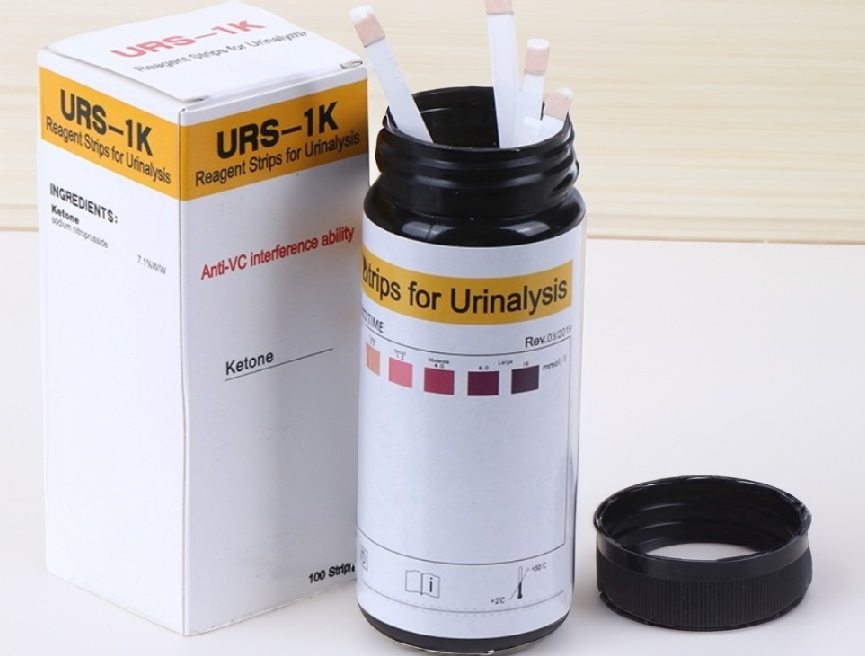Due to its promise to support weight reduction, boost mental clarity, and improve general health, the ketogenic diet has been extremely popular in recent years. Ketosis strips are among the supplies that people who follow this high-fat, low-carb diet frequently utilize. Measuring ketone levels in the body to determine if a person has reached the state of ketosis is the purpose of these straightforward yet effective strips. The science of ketosis strips, their operation, and their importance within the framework of the ketogenic lifestyle will all be covered in this essay.
Understanding Ketosis
Understanding the idea of ketosis is necessary in order to comprehend how ketosis strips function. The body burns fat rather than carbs as its main energy source while it is in ketosis. The body is forced to convert lipids into ketones, an alternative kind of energy, when the consumption of carbohydrates is drastically decreased.
The Significance of Ketosis Strips in the Ketogenic Lifestyle
Ketosis strips serve as valuable tools for those on a ketogenic diet for several reasons. They provide immediate feedback, allowing individuals to gauge whether they are in ketosis or need to adjust their dietary intake. Additionally, these strips can offer motivation and reinforcement, especially for beginners, by confirming that their efforts are leading to the desired metabolic state.
How Does a Ketosis Strip Work?
Ketosis strips, sometimes referred to as keto strips or ketone test strips, function by identifying ketones in the urine. One of the three types of ketones generated during ketosis, acetoacetate, interacts with a unique molecule present in the strips. The color shift on the strip, which may be obtained by peeing on it or dipping it into a urine sample, shows the degree of ketosis.
How to Read Ketosis Strips
While ketosis strips provide a convenient way to measure ketone levels, it’s important to interpret the results correctly. Different shades on the strip indicate varying levels of ketosis. Understanding these readings helps individuals adjust their diet and lifestyle choices for optimal results.
Test strips for ketones are easy to interpret. They go by the names ketosis strips or keto strips as well. By determining the quantity and concentration of ketones in your urine, these strips can help you determine whether or not your body is in a ketotic condition. Carefully follow these instructions in order to read ketosis strips:
1. Acquire Ketosis Strips
Purchase ketosis strips from a pharmacy, online store, or a local health store. Ensure the strips are not expired and follow the instructions provided on the packaging.
2. Prepare a Clean Container
Collect a urine sample in a clean, dry container. Some ketosis strips require you to dip the strip directly into the urine stream, while others require you to dip the strip into a small amount of collected urine.
3. Dip the Strip
If your strips require dipping, immerse the Strip into the urine for the duration specified in the instructions (usually a few seconds).
4. Wait for the Reaction
After dipping the strip, wait for the specified amount of time mentioned in the instructions. Typically, it takes 15-30 seconds for the reaction to occur.
5. Compare the Color
After the waiting period, compare the color of the ketosis strip to the color chart provided on the packaging. The color on the strip corresponds to different levels of ketones in your urine.
Light Pink to Light Purple: This often denotes a mild to moderate state of ketosis and low to moderate ketone levels. This is an advantageous outcome if you are following a ketogenic diet.
Dark Purple to Darker Purple: This indicates higher levels of ketones and might suggest a deeper state of ketosis. However, extremely high ketone levels are not always better and should be discussed with a healthcare professional.
Common Myths and Misconceptions about strips
Myth 1: A darker strip indicates a deeper state of ketosis.
Fact: While the color intensity of ketosis strips reflects the amount of ketones in your urine, it does not always represent the depth of your ketosis. The amount of water in your body and the time of day can also have an impact on the amount of ketones in your urine. Better outcomes aren’t necessarily associated with deeper hues.
Myth 2: You’re not losing weight if your ketosis strip don’t show any ketones
Fact: There is no direct link between the presence of ketones in urine and weight reduction. Strips show excretion of ketones rather than how well your body uses them as fuel. A person’s metabolism, total diet, level of activity, and calorie consumption are some of the variables that affect weight reduction.
Myth 3: Everyone’s Ketosis Strips Are Accurate.
Fact: People who have followed a long-term ketogenic diet may find that ketosis strips are less reliable. Your body uses ketones more effectively when it gets acclimated to the ketogenic diet, which results in less extra ketones being eliminated through urine. In these situations, monitoring ketone levels is more precise using blood ketone meters.
Myth 4: Only Keto Dieters Can Use Ketosis Strip.
A severe condition when ketone levels in the blood become abnormally high, ketoacidosis, can be detected with strips, despite the fact that they are most popular among those on a ketogenic diet.
Myth 5: Ketosis Strips Are Expensive and Inaccessible.
Fact: Ketosis strips are relatively affordable and widely available in pharmacies, online stores, and some grocery stores. They come in different brands and price ranges, making them accessible to most people interested in monitoring ketone levels.
Important Tips:
Hydration Levels: Remember that hydration can affect the concentration of ketones in your urine. If you are well-hydrated, your ketone readings might be less concentrated. Time of Day: Ketone levels can fluctuate throughout the day. Many people find that their ketone levels are higher in the morning, especially if they have been fasting overnight. Consistency is Key: For the most accurate tracking, try to test at the same time each day and under similar conditions (e.g., after waking up and using the bathroom).

